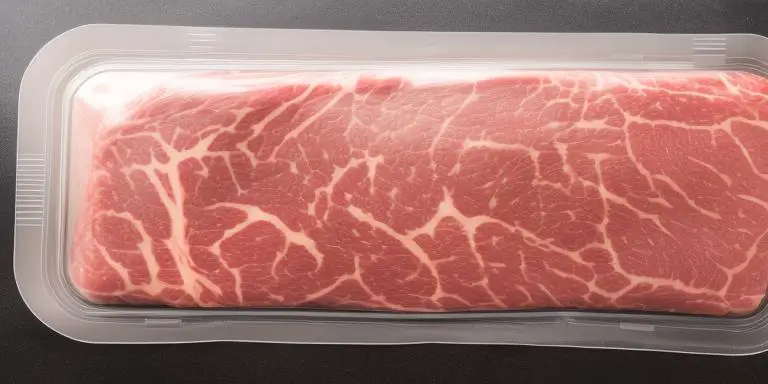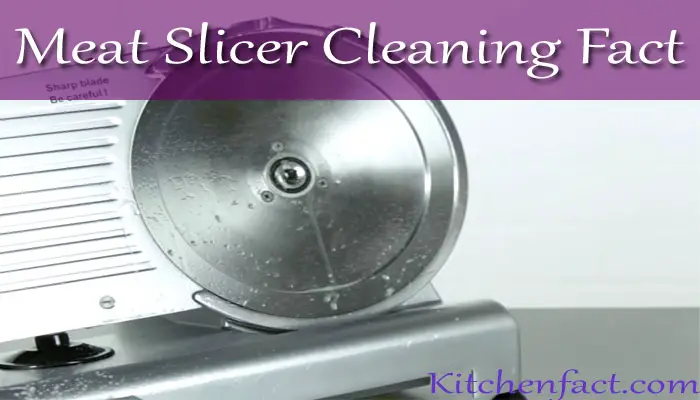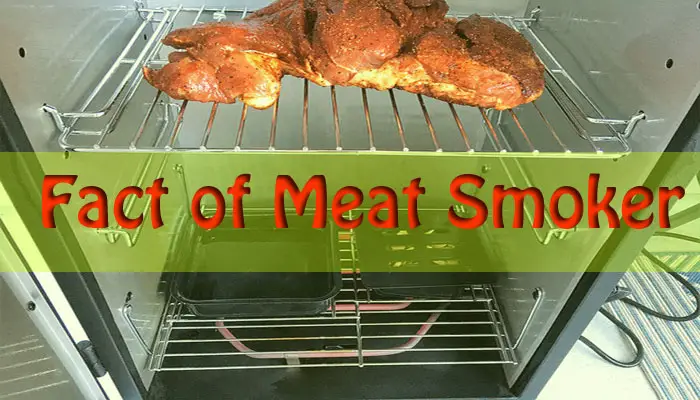Vacuum sealed meat can last for weeks in the refrigerator, but how do you know when it has gone bad? Don’t worry – we’ve got you covered. In this blog post, I’ll discuss the signs and symptoms of bad vacuum sealed meat so that you can avoid food poisoning and keep your family safe.
Can vacuum sealed meat go Bad?
Yes, vacuum sealed meat can go bad. The main concern with vacuum sealing meat is the quality of the seal. If the seal is not properly made, air and moisture can get into the meat, leading to spoilage and food poisoning.
Now check How to tell if vacuum sealed meat is bad
Do you have any questions about vacuum sealed meat? If so, I’ve got the answer for you! In this section, I’ll discuss the different types of vacuum seals and how they affect food.
I’ll will also review the different signs that indicate a vacuum sealed product may be bad. So whether you’re curious about the safety of vacuum sealed meat or just want to be sure you’re getting what you paid for, this blog is for you!
Check The Color Of The Meat
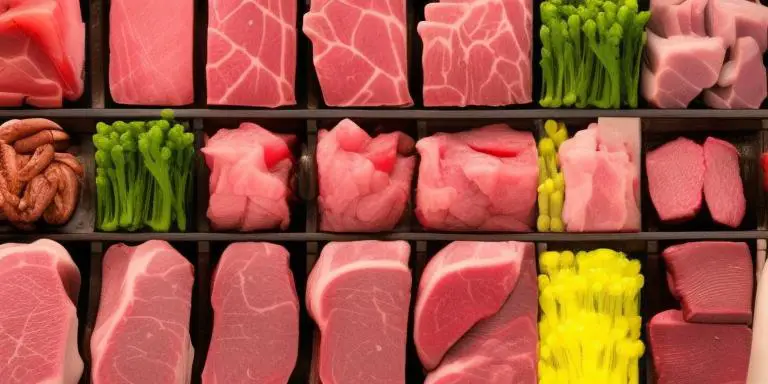
Checking the color of meat is an important part of ensuring it is safe to eat. After rinsing and patting dry, the natural color should return to the meat within 30 minutes. The color can be a varied shade of red or pink, however slight discoloration is natural. Additionally, while the color of the beef in the package is not an indication of freshness, it can be an indicator of how much oxygen was in the package at the time of vacuum sealing. If there is a grayish or greenish tint, this could be a sign that the meat has gone bad. Therefore, it is important to check for any off odours or surface discolouration as these are key indicators that the meat has spoiled.
Rinsing and Patting Dry
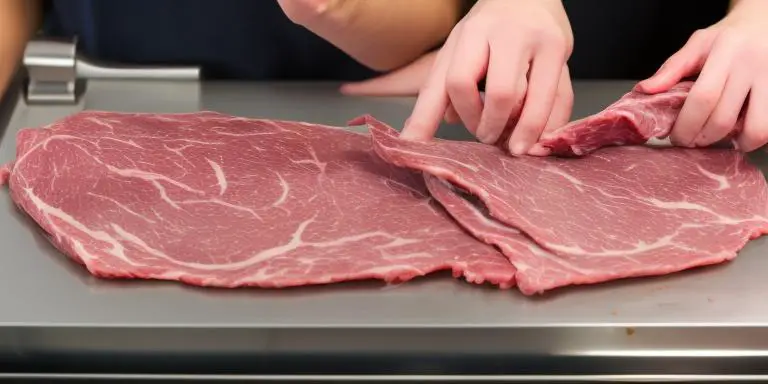
Rinsing and patting dry the meat is an essential step to help ensure that it remains safe to eat. To do this, the meat should be carefully washed in clean, fresh water and patted dry. It’s important to avoid splashing the water, as this can further spread any bacteria that may be present. After rinsing and patting dry, the meat should be allowed to stand for at least thirty minutes to allow the natural color to return. If the meat has a foul smell or feels sticky or slimy when being handled, it is likely spoiled and should be discarded. Vacuum sealing frozen beef can help extend its shelf life, if stored in a low temperature refrigerator such as a standard home fridge.
Evidence of Gas Production
One indicator of spoilage in vacuum-packed meat is the evidence of gas production. During microbial deterioration, gas production within the pack can lead to distension, which is commonly referred to as a ‘blown pack’. To tell if this has occurred, one should look for a grayish or greenish tint in the meat. Additionally, if the pack has a pH of less than −140mV when vacuum packed and −70mV when aerobically packed (Kim et al.), then this could be an indication that gas production has occurred. If any of these indications are present, it is best to discard the meat as it may have spoiled.
Surface Discolouration
Surface discolouration is one of the key signs to look for when trying to determine if vacuum-sealed meat has gone bad. Discolouration can include a grayish or greenish tint, which indicates the meat has been exposed to air and is not suitable for eating. If you notice any discolouration on the surface of the meat, it is best to discard it immediately. If you are unsure about whether the discolouration is normal or a sign of spoilage, you can contact your local butcher or check with a food safety expert.
‘Greening’ Of The Meat
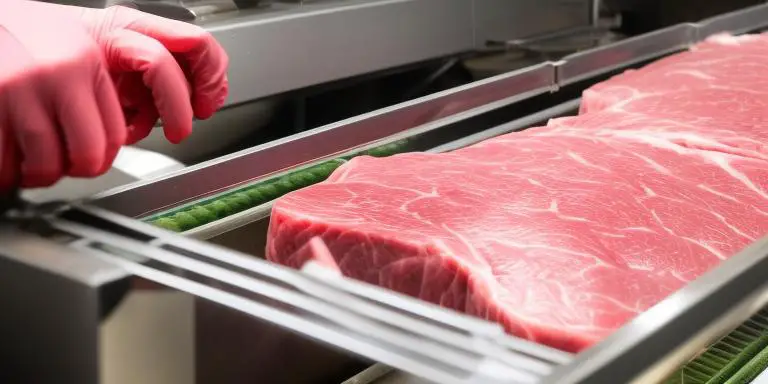
One of the telltale signs that vacuum sealed meat has gone bad is ‘greening’ of the meat. This discolouration or discolouration of the fat or muscle tissue is caused by changes in the meat structure due to enzymatic or bacterial reactions. The color will be a grayish or greenish tint and this indicates that the meat is no longer safe to consume. It is important to remember that this discolouration can occur even before any off odours are present, so it is important to be vigilant when it comes to checking your vacuum sealed meat for spoilage.
Off Odours
Off odours are another sign of spoiled vacuum-sealed meat. If you open the packaging and detect a foul smell, then the meat should not be consumed. It is possible that the meat has gone bad due to bacteria in the airtight environment. If you are unsure of the smell, it is best to discard it. Additionally, if you detect a sour, acidic smell coming from the vacuum-sealed meat then it should be thrown away as well. It is important to remember that if the odour seems suspicious, it is best to err on the side of caution and discard the meat.
Grayish or Greenish Tint
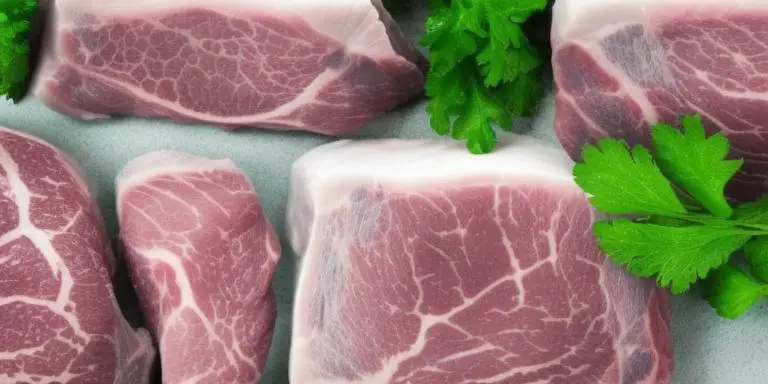
One of the tell-tale signs of spoiled vacuum-sealed meat is a grayish or greenish tint. A change in color can be a sign that the product has been exposed to oxygen and is beginning to spoil. It is important to note, however, that not all color changes are indicative of spoilage. For example, the beef in vacuum-packed packages may change color due to the amount of oxygen present at the time of packaging. To determine if your meat is safe to eat, look for other signs, like a slimy texture, an off odor, or being outside of its best before date.
Telling Signs To Look For
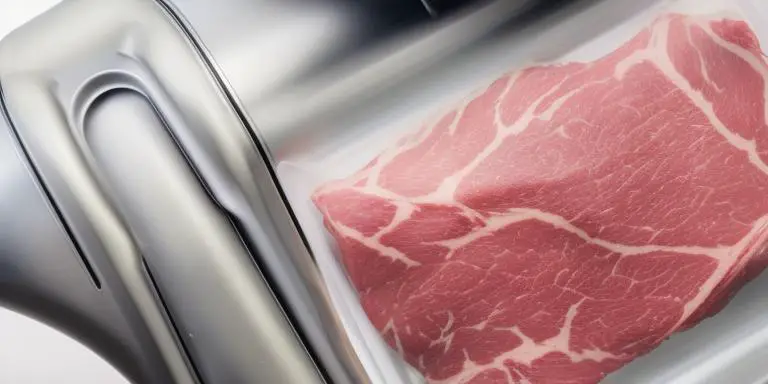
When inspecting vacuum sealed meat, there are some telltale signs to look out for that can help you determine whether or not the meat has gone bad. It’s important to check the color of the meat, as well as any discolouration on the surface. Additionally, it’s important to note any off odours that may be present, and to look for a grayish or greenish tint on the meat. When it comes to determining if vacuum sealed meat is safe to eat, these are all important signs to look for. If any of these signs are present, it may be best to discard the meat and opt for something fresh.
Tips To Avoid Spoiled Vacuum-Packed Meat
It is important to take the necessary precautions when handling and storing vacuum-packed meats. First, make sure that the meat is kept properly refrigerated or frozen until you are ready to use it. It is also important to check for any signs of spoilage prior to use such as discoloration, sliminess, bad smell, or gas production. Additionally, make sure that you do not contaminate your meat with harmful bacteria and always rinse it off before cooking. Finally, it is important to pay attention to the shelf life of vacuum sealed meat and discard any packages that have been open for longer than the recommended time. By following these tips you can ensure that your vacuum-packed meat stays fresh and safe to eat.
Shelf Life of Vacuum Sealed Meat
The shelf life of vacuum sealed meat depends on the type of meat and how it is stored. Generally, vacuum sealed meat can last up to three months in the refrigerator and up to 10 days in the freezer. However, the maximum storage life of raw meat can be extended up to 10 days when vacuum sealed. It is important to note that vacuum packaging does not prevent the growth of all bacteria, so it is still important to check for any signs of spoilage. Additionally, make sure the temperature of your fridge is below 40° F for optimal storage. For best results, after opening the package, it has about a 5 day shelf life before you see loss of quality.
What Types of Meat Can Be Vacuum Sealed?
Vacuum sealing is a great way to keep meat fresh for longer. It also helps to preserve its quality and flavor, making it ideal for food storage. Vacuum sealed meat can include poultry, pork, beef, veal, lamb and game. All these types of meat can be vacuum sealed to extend their shelf life by up to six weeks. Additionally, vacuum sealing can help to prevent freezer burn and reduce the risk of cross-contamination between different meats. Vacuum sealing is also a great way to transport meats, as it helps to protect them from bacteria and other contaminants.
How to tell if Vacuum Sealed Meat is Safe to Eat?
It is important to make sure that your vacuum sealed meat is safe to eat. To determine this, it is first necessary to check the color of the meat. After rinsing and patting dry the meat and allowing it to stand, the natural color should return to the meat within 30 minutes. Evidence of gas production can also be a tell-tale sign that the vacuum sealed meat has gone bad. If there is any discoloration on the surface, ‘greening’ of the meat or off odors, then it is likely not safe to eat. Additionally, if there is a grayish or greenish tint to the meat then this is an indication that it has gone bad. Lastly, if your vacuum sealed meat never loses its freezing temperature then it is safe to eat for a while, however, its quality will reduce over time depending on how you store it. It is best to check these different signs to make sure that your vacuum sealed meat is safe for consumption.
Conclusion
In conclusion, it is important to be aware of the signs of spoiled vacuum-packed meat. Checking the color, rinsing and patting dry, examining for evidence of gas production, observing surface discoloration, looking for ‘greening’ of the meat, smelling for off odors, and looking for a grayish or greenish tint are all signs that the meat is no longer safe to eat. Additionally, it is important to understand the shelf life of vacuum-packed meat and know when to discard any meat past its use-by date. With these tips in mind, it is possible to ensure that vacuum-sealed meat stays safe and delicious for as long as possible.
Frequently Ask and Question
How long does vacuum sealed meat stay good?
The best time to eat vacuum sealed meat is within 3-4 months after it has been vacuum sealed. After that, the meat may start to spoil and may not be safe to eat.
How long does vacuum packed meat stay good in the freezer?
The best time to consume vacuum packed meat is within 2-3 days after it is packaged, since the food will start to spoil after that point. After 3 days, the food may start to spoil and may not be safe to eat.
Rita C. Donnell (Jennifer) has spent the last 26 years studying and practicing nutrition science. She has used a larger part of this time in improving people’s livelihoods. She has done so by coming up with unquestionable ideas on how to tackle food problems in her community. Readmore

